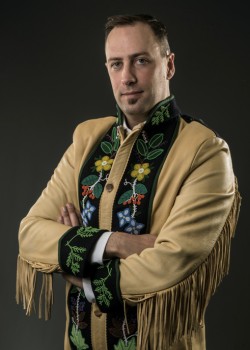Promoting racial inclusion
It started with a Maclean’s article that declared Winnipeg as Canada’s most racist city. That could have been a moment of shame for the city, passed off as national media pointing at lowly Winnipeg. Instead that article became a turning point; it was an opportunity to rally as a community and promise to make a difference. That moment has spawned the beginning of change. Winnipeg’s leaders, including University of Manitoba President and Vice-Chancellor David Barnard, reflected on that momentous day. The Indigenous Advisory Circle was announced. Plans were made to host One: The Mayor’s National Summit on Racial Inclusion.
Racism is a national problem. One: The Mayor’s National Summit on Racial Inclusion will encourage Canadians to take action against racism. The summit takes place on September 17 & 18 at the Canadian Museum for Human Rights.
“To encourage profound change, the One Summit has got to be more than a discussion group,” said Winnipeg Mayor, Brian Bowman on the One Winnipeg website. “It has got to identify initiatives that are already working and develop new and sharable ideas to encourage respect and tolerance across our nation.
Ry Moran, director of the National Centre for Truth and Reconciliation at the U of M, has been invited to serve as moderator for a session titled “What works? Good practices in promoting healthy race relations.” UM Today took a moment of Moran’s time to discuss his perspectives on racial inclusion.
UM Today: What do you think the role of the university is in racial inclusion in Winnipeg?
Ry Moran: Universities play an important role both in terms of being centres of critical thinking and as large organizations in and of themselves. Through education, the subtleties and effects of racism can be taught to learners. Many faculty members on campus have studied the effect of racism and there is much to be learned from these experts.
As a significant organization, universities can also play a significant role in being champions of racism-free environments. Through staff education and training, proactive campus-wide policies and other initiatives, universities can say that despite what may happen off campus, while on campus all people should have the right and opportunity to work, learn, play and study in an environment free from the sting of racism.
How can as individuals promote healthy race relations? What can I do to end racism in my city?
I believe racism is largely about education, but this is not just an external journey about learning more about other people. It is also a journey about learning more about ourselves; how we think, how we see the world, and in many cases, how we have inherited past racially laden traditions and ideas that have been around western society for a very long time.
To end racism in the city, each individual needs to stop being racist. So it starts right at home, right inside you.
The next step I believe is to have or develop the courage to speak out against racism. I have seen racism manifest in so many different social situations where it is hard to call a person on their statement or preconception. As a society we need to have the courage and common understanding that while it will always be ok to make mistakes, racism in all of its many forms needs to be eliminated.
What are the steps that can bring Canada to racial unity and true reconciliation?
As above, racism I believe is about education. I also believe that anyone that is in a position of leadership – be it as a parent, as a manager, as a CEO – needs to set a positive example for others to follow. The power to create a society free of racism is within all of us – we need to do it.
On the issue of reconciliation, that term has mostly been used to discuss the wide gaps that remain between many indigenous and non-indigenous people. Many of these gaps are a direct result of racist policies and conceptions of indigenous people that continue to hurt indigenous peoples in the present day.
Aside for the glaring and brutal reality that indigenous peoples were forced to attend residential schools that were designed to destroy their culture, language and identity for the sole purpose of turning them into members of dominant society, so often we have heard stories of indigenous people receiving sub-standard levels of care, of being misrepresented by various systems or simply being dismissed before they even begin to speak. This has an ongoing and direct impact on the health, well-being and overall experience of indigenous peoples in this country. It has to end.
In your experience, how can we create inclusive communities?
It sounds like a poor answer, but we can create inclusive communities by being inclusive – by welcoming and embracing the multitude of cultures that exist and by ceasing to pre-judge individuals.
You cannot be inclusive so long as you are creating barriers. These barriers can be either external that keep people away through subtle or overt policies, practices or other behavior or internal that are inside of us that push people away.
Remember, we are all human beings and we all generally share the same goals in life. If we look for the good in everyone instead of the faults, especially when those faults are purportedly determined based on the race of ethnicity of a person then we will go a long ways to dealing with racism.







